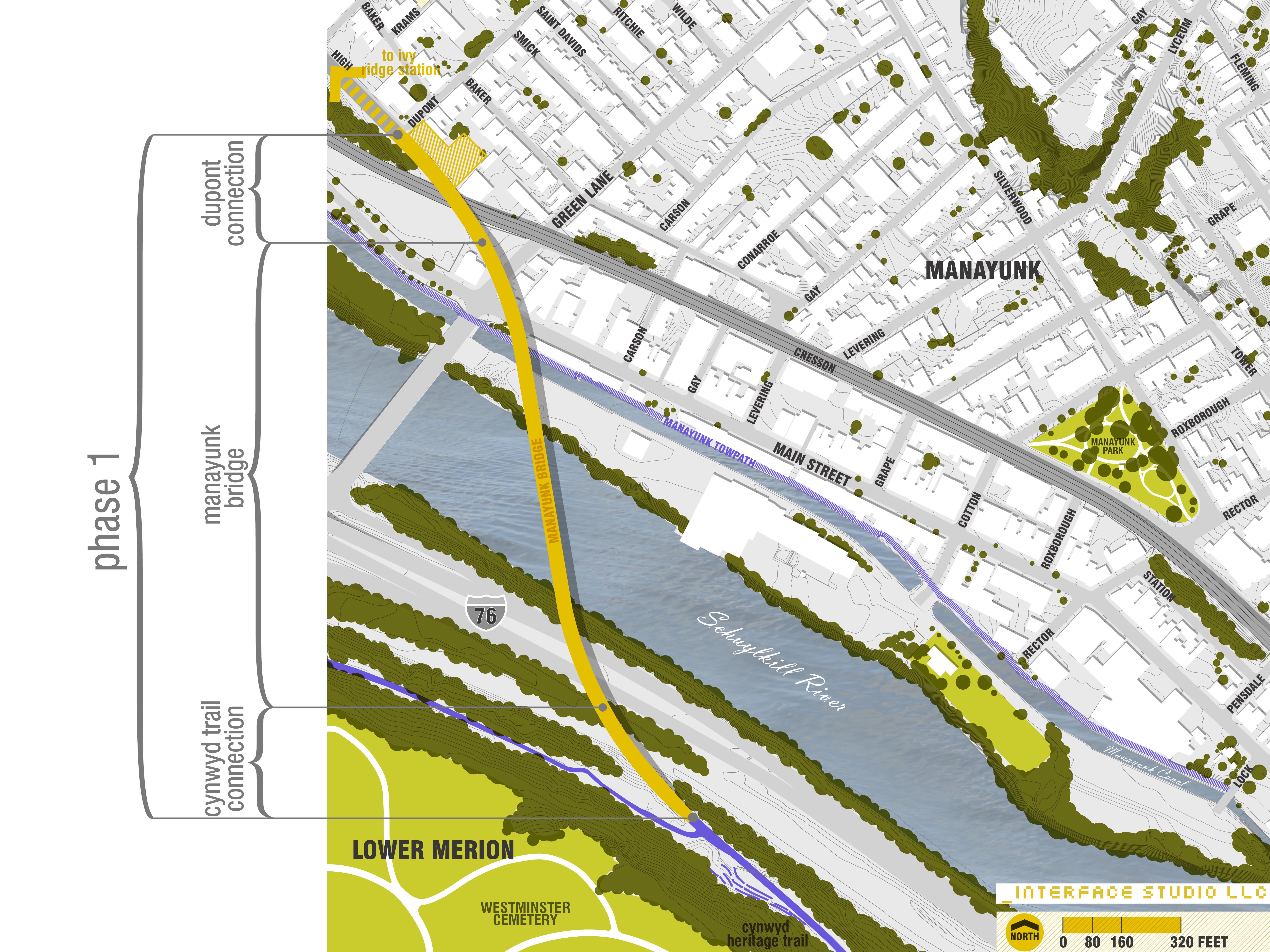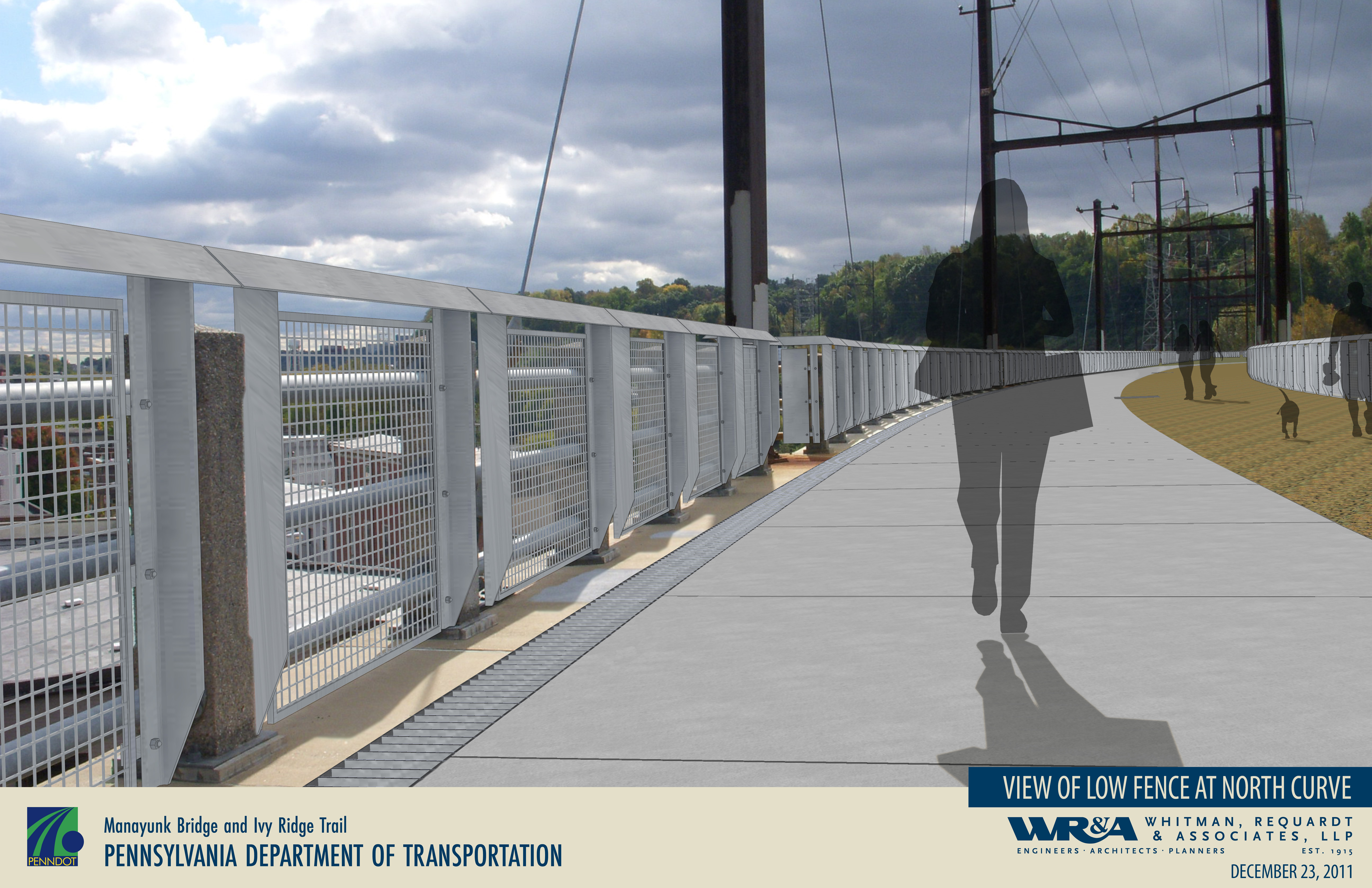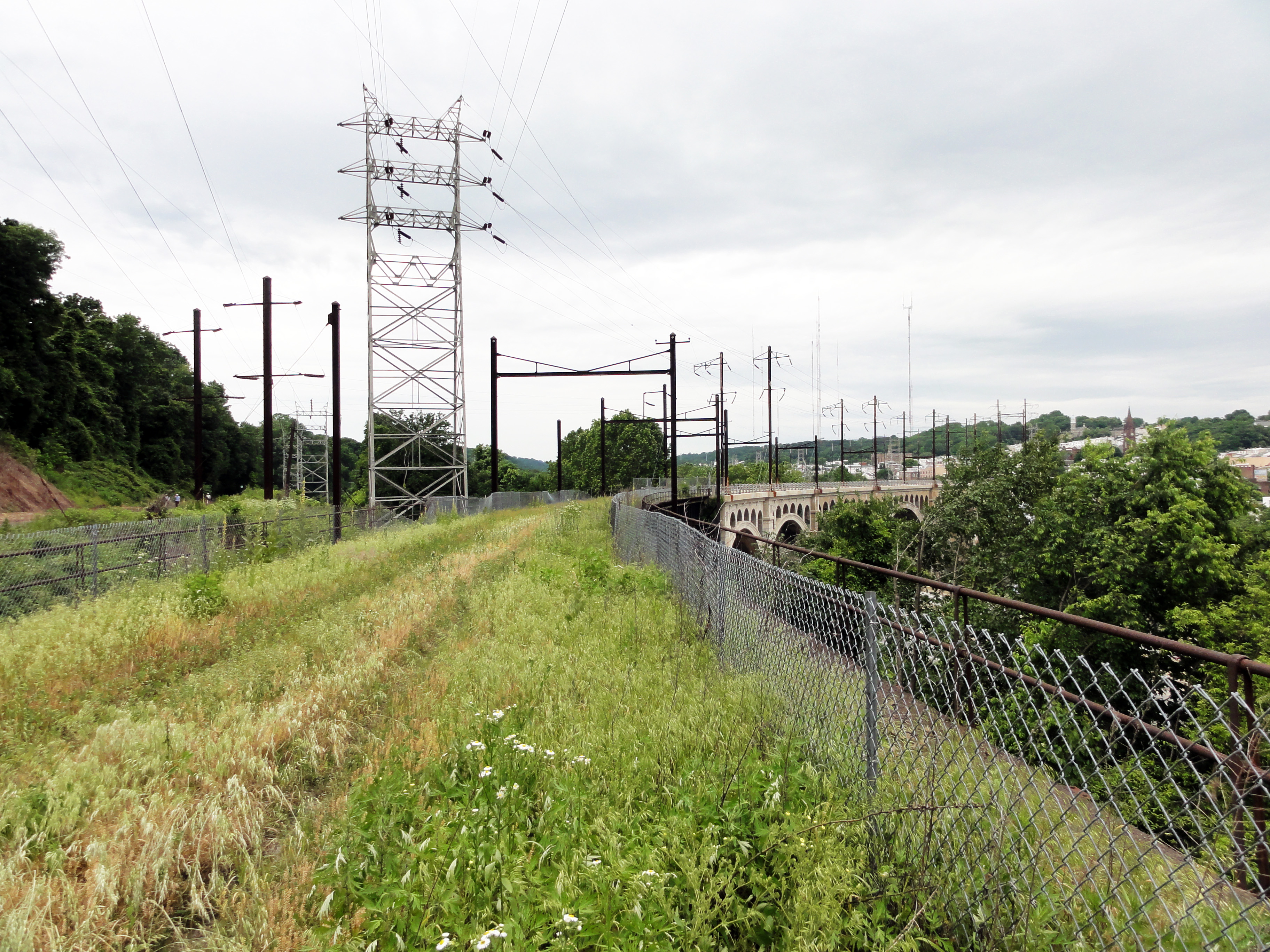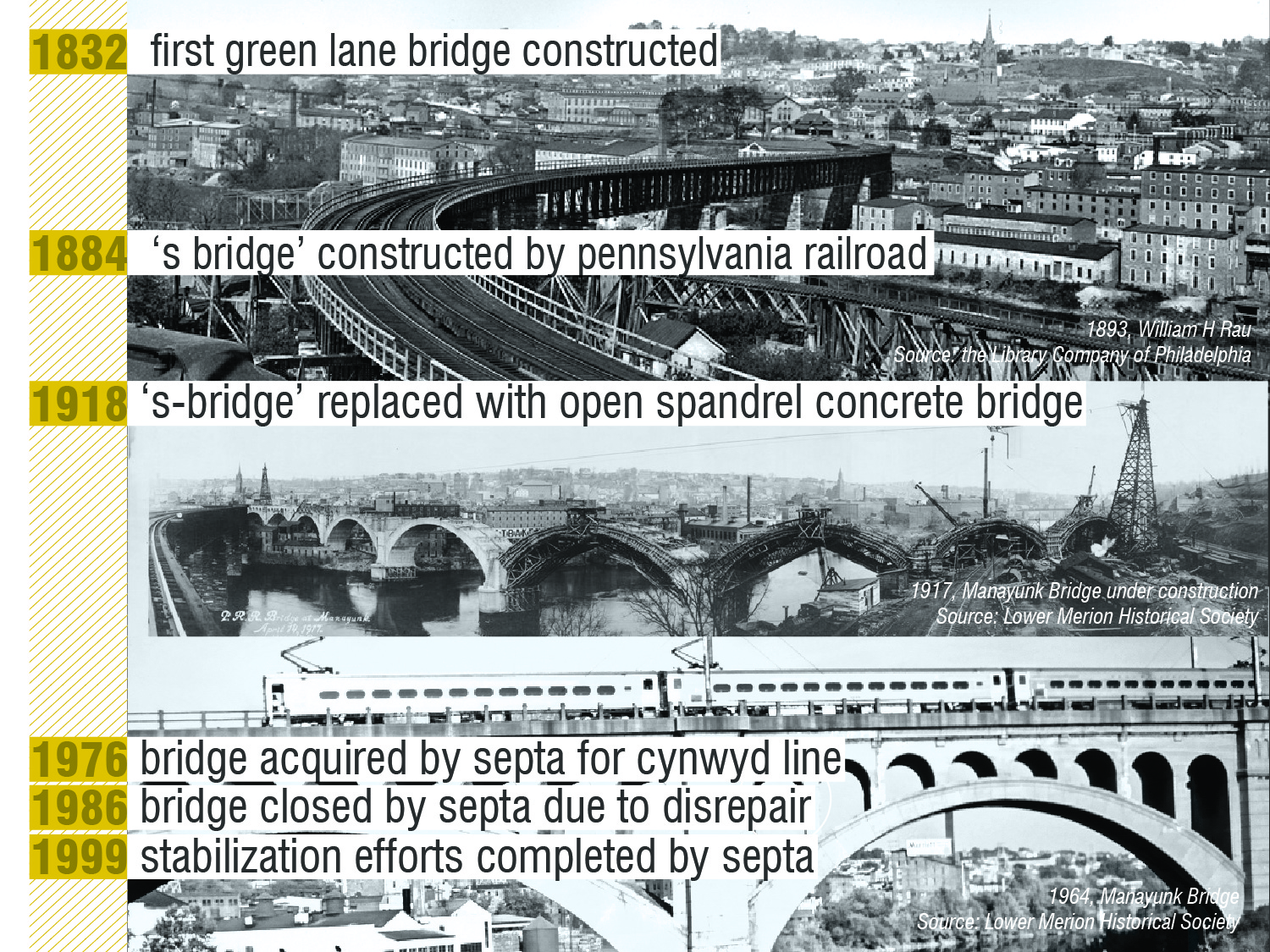Manayunk Bridge closer to getting a second life
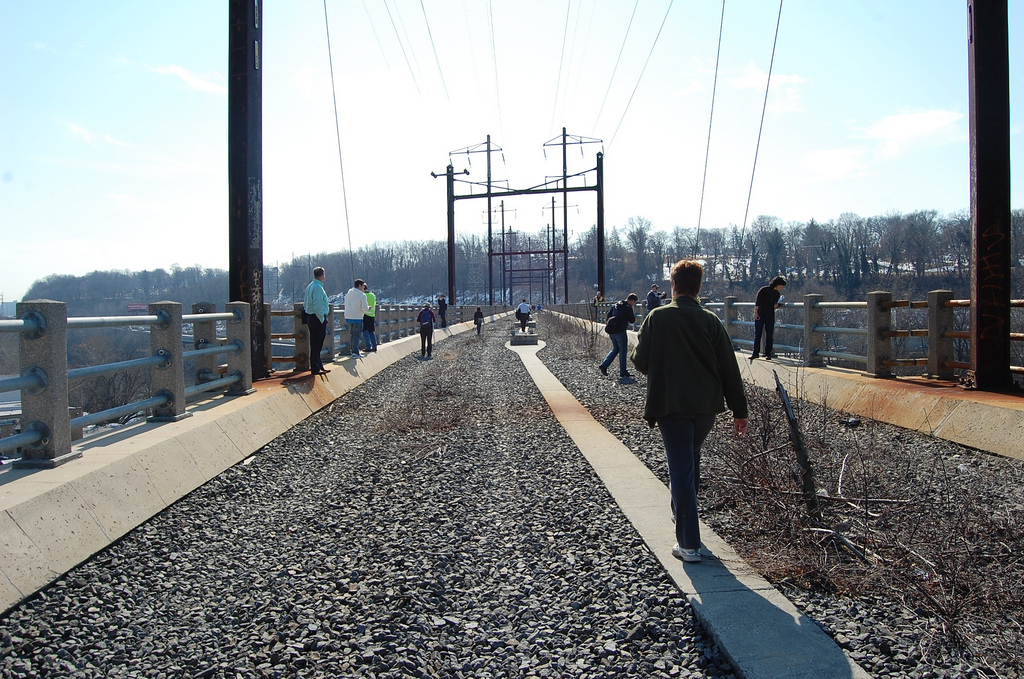
The transformation of the Manayunk Bridge into a sweeping bicycle and pedestrian trail, high above the Schuylkill River, is one step closer to fruition as the City solicits construction bids this month.
A former Pennsylvania Railroad bridge, the Manayunk Bridge curves its way across the Schuylkill River from the Bala Cynwyd section of Lower Merion into Manayunk.
Built in 1918, the bridge was decommissioned in 1986, but since 2010, a large and diverse coalition of stakeholders has been working to reopen the bridge as a pedestrian and bicycle amenity. When complete, the bridge span, which measures about one-third of a mile, will connect the Cynwyd Heritage Trail in Lower Merion with the work-in-progress Ivy Ridge Trail in Manayunk.
Linking these trails will allow Lower Merion residents to walk or bike to Manayunk, and in the other direction, Manayunk residents will have access to the greenspace of the bridge itself as well as the Cynwyd Heritage Trail and the two cemeteries that it touches.
While the bridge is an important trail segment, it is also taking shape as a completely unique vantage point.
“The bridge is an extraordinary landmark from below,” said Jeff Riegner, vice president of Whitman, Requardt & Associates, LLP (WR&A), the firm that led the design phase od the project. “Everyone who drives the Schuylkill Expressway knows it, but I think the views from the top even exceed that.”
Riegner is one of many who believe the bridge will become a popular destination.
“It’s incredible,” said Sarah Clark Stuart, policy director at the Bicycle Coalition of Greater Philadelphia. “You’re very high up off the water. You’re sort of floating up in the sky because there is no infrastructure next to the bridge … . You have this great, sort of open, expansive view of the river – all of the foliage and trees along the bank – and then you are looking down on Manayunk.”
“It feels very special because you know that you can’t see this from any other place,” she said.
TIMELINE AND DESIGN
The bridgework is essentially waiting to go. The design is complete. The funding is in place, and this month PennDOT is accepting construction bids.
The design team, led by WR&A, came up with a simple concept that uses different concrete colorings to indicate which area is for cycling and which is for walking. High quality, transparent fencing is central to the design and intended to meet safety standards without diminishing the view.
“We wanted to make the design beautiful and elegant but not to detract from the natural setting of the area,” Riegner said.
In its current state, the design does not include items such as lighting, benches or planters, electrical receptacles to provide power for events on the bridge or public art.
“What we’re doing is establishing a framework on which the community can add a number of different pieces,” Riegner said.
“I think every project has to face certain financial realities,” he explained. “There’s always a budget to deal with but it was really important to the stakeholders that, rather than doing an inexpensive project, we do a high quality project where if things need to be added later they can be.”
According to Charles Carmalt, bicycle and pedestrian coordinator at the Mayor’s Office of Transportation and Utilities (MOTU), the city hopes the project will go to construction before the summer. On that timeline, work could be completed as early as May 2015.
GROUP EFFORT
Getting the project to this point has been no easy feat, especially given the number of partners involved. That list includes: the City of Philadelphia, Lower Merion Township, Montgomery County, SEPTA, PennDOT, the Delaware Valley Regional Planning Commission (DVRPC) and nonprofits including the Bicycle Coalition of Greater Philadelphia and the Schuylkill Project.
“From the City’s perspective, the opportunity to work with so many supportive partners was an exhilarating experience,” Carmalt said. “… That said, the number of approvals that this relatively short project required was quite intimidating and, at times, frustrating.”
Riegner said normally it would have been very difficult to get this sort of project done with so many clients, but given everyone’s passion and willingness to cooperate, things worked well.
The $3.5 million project is funded with a $1.3 million Pennsylvania Community Transportation Initiative (PCTI) grant that the City secured, $1.1 million from PennDOT’s Surface Transportation Program, $500,000 from a Pennsylvania Department of Conservation and Natural Resources (DCNR) grant, $250,000 from Lower Merion Township and a $200,000 federal Congestion Mitigation and Air Quality (CMAQ) grant.
Even maintenance will be a joint effort. SEPTA will retain ownership of the bridge. Lower Merion and the City will each lease portions of the bridge and have each entered into maintenance agreements.
For its part, SEPTA is an eager partner.
“We support any project which increases pedestrian and bicycyle facilities in our region, especially in the vicinity of our stations,” said Liz Smith, manager of long range planning at SEPTA. Smith also worked on the project while employed at DVRPC.
From the Manayunk Bridge, SEPTA passengers might follow the Cynwyd Heritage Trail to Cynwyd Station or use the street network to reach Manayunk Station. At this time SEPTA does not have plans to use the bridge for an active rail line. It is written into the lease that if SEPTA does need to use the bridge in the future, it would be able to do so – hopefully, Smith said, with both uses coexisting. SEPTA sees added benefits in the potential of this project to reduce trespassing and vandalism currently taking place on the bridge. The project will also make drainage and safety improvements at no cost to SEPTA.
“Honestly, from my perspective, it was impressive to see all of the different stakeholders put their best foot forward and really work in a collaborative effort,” said Ryan Gallagher, a DVRPC planner who served as one of the project managers.
“I think it provides, not only experience for those agencies and entities involved so that maybe there are some smoother transitions in the future, but I think it shows the ability of the different agencies involved and how they’re able to streamline the process when needed,” he said.
For bike advocates, the trail makes an important statement about the region’s commitment to completing The Circuit, a 750-mile network of regional bike trails.
“It’s going to be a huge addition to The Circuit because it’ll be a very high profile and I think popular trail amenity that will bring a lot more people to The Circuit that otherwise might not be coming to it now,” Stuart said.
WHYY is your source for fact-based, in-depth journalism and information. As a nonprofit organization, we rely on financial support from readers like you. Please give today.



